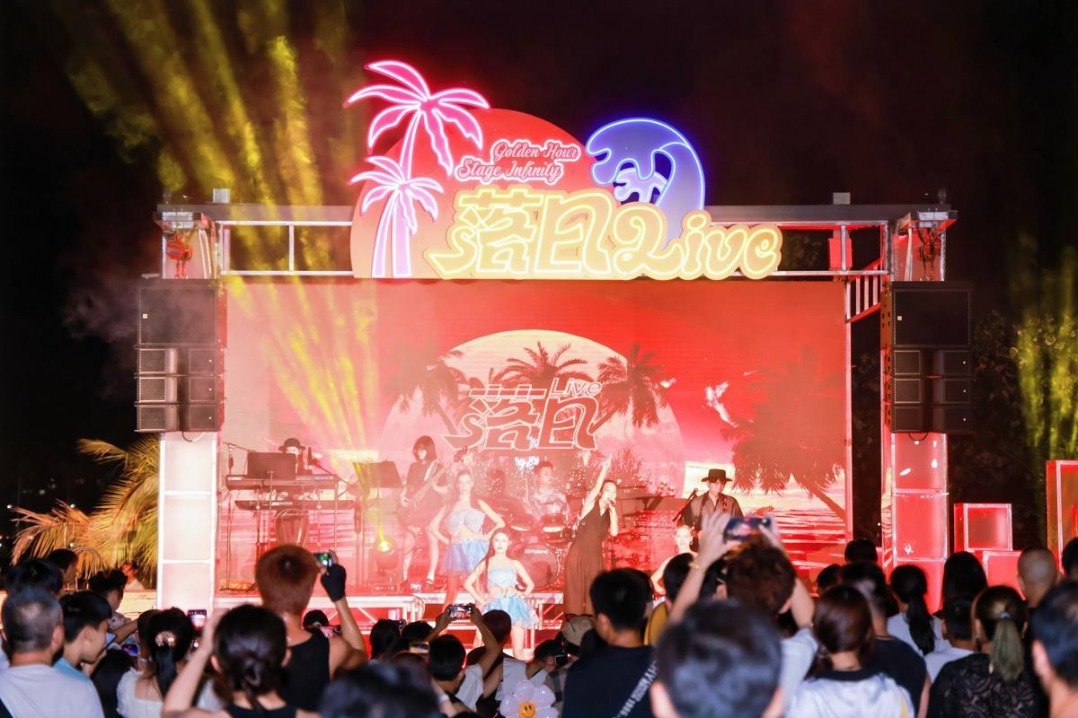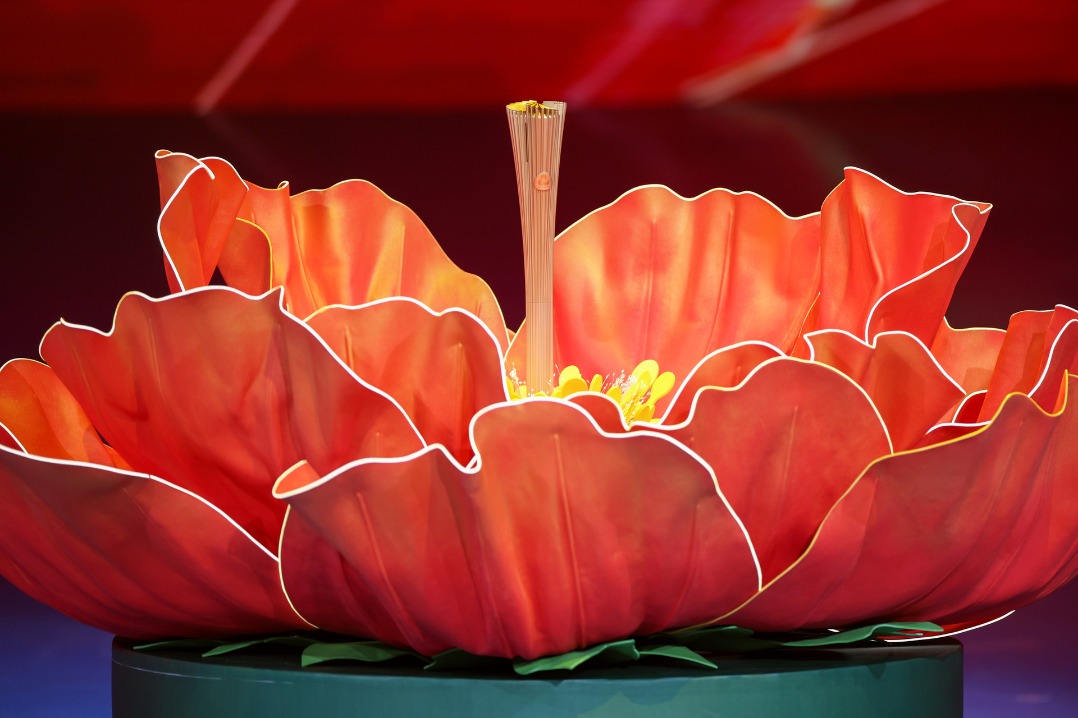The day a television smash hit was born

When Wang Fulin visited London, it was not Buckingham Palace, the Tower of London, black taxis or red double-decker buses that made the deepest impression on him. Instead, as he flew home to China, the picture fixed in his mind was a very Chinese red.
It was 1979, and Wang had just spent several days in the British capital with a delegation from the State Administration of Press, Publication, Radio, Film and Television of China. They had visited the BBC at a time when the series Downton Abbey was still years away from even being an idea on a storyboard, but when the British broadcaster had already carved out a worldwide reputation with its high-quality TV period dramas.
One of the most celebrated was the 1967 adaptation of the John Galsworthy novel The Forsyte Saga, which ran in 26 parts and was broadcast all over the world. Sarah Crompton of the Daily Telegraph in London said of the drama: "It was not the first literary adaptation on TV, but it was longer and more ambitious than anything screened before, and it has come to represent every value and standard to which British TV has aspired ever since."
| A book titled 1987, Our Dream of the Red Chamber, written by actor-turned-director Ouyang Fenqiang, was published recently. Photos Provided to China Daily |
| From left: Actresses gather in Beijing to celebrate the 30th anniversary of the TV series; a scene from the 1987 TV classic; actor Ouyang Fenqiang and actress Chen Xiaoxu during the shooting of the TV drama. |
So when filmmaker Wang visited the BBC that day, the idea that occurred to him was essentially this: "If the British can do it, why can't we?"
He says now: "They had adapted many world classic novels into TV series, and I wondered why we could not do the same with Chinese classics and have them shown worldwide."
What Wang specifically had in mind was the dazzling story and dozens of complex characters that make up the 18th-century novel Dream of the Red Chamber by Cao Xueqin. It is considered one of China's Four Great Classical Novels, alongside Water Margin by Shi Nai'an, Romance of the Three Kingdoms by Luo Guanzhong, both written in the 14th century, and Journey to the West by Wu Cheng'en, written in the 16th century.
Dream of the Red Chamber chronicles the downfall of the Jia family during the Qing Dynasty (1644-1911) against the backdrop of the country's social and political upheavals.
Earlier in his career Wang, now 86, had directed the nine-episode TV series Di Ying Shi Ba Nian, or 18 Years of the Enemy Camp, about Chinese Communist Party soldiers. The series came out in 1980, the first TV series made on the Chinese mainland.

"At that time, unlike Chinese film, which started in 1905, China's TV series production was in its infancy," Wang says. "When I proposed making a TV series based on Dream of the Red Chamber I ran into a lot of opposition."
He spent two years organizing auditions, searching for film locations and preparing scripts, and no expense would be spared in its making.
Whereas a typical Chinese TV series in those days cost 10,000 yuan ($1,516; 1,286 euros; £1,160) to make, Dream of the Red Chamber had 5 million yuan lavished on it.
"You can guess how incredibly difficult it was to get government funding," Wang says.
But his resolve was fortified by a strong sense of mission: He wanted to spread the knowledge of traditional Chinese culture and deepen the influence of the classic novel. To that end, he invited a group of so-called "redologists" - experts on Dream of the Red Chamber - including Zhou Ruchang and Wu Shichang, to help write the script.
Apart from portraying the hundreds of characters in the novel, the 36-episode series would also offer a look at China in the philosophical context of Buddhism, Confucianism and Taoism.
In the auditions, which began in early 1983, Wang says he was not looking for top professional actors. What he wanted instead were people who the experts reckoned shared the physical traits of the characters depicted in the novel.
Many of the actors were amateurs from many different walks of life, sifted out by the core crew members, including Wang, the cinematographers and scriptwriters. Once chosen, the actors went through months of rigorous training.
From 1984 to 1987, the production team traveled to more than 40 regions across China to do the filming.
Eventually, in an era when there were so few television sets in the country that families and villagers used to gather around a communal set to watch programs, the first episode was aired on May 2, 1987, eight years after Wang had had his brainstorm.
As television has gradually become universally available in China over the past 30 years, viewers of all ages have clamored to see the 1987 series, and TV stations around the country have replayed it more than 3,000 times.
And just as The Forsyte Saga set the standard for period dramas all those years ago, Wang's production of Dream of the Red Chamber set a benchmark for television producers in China for years to come.
So when the series recently celebrated the 30th anniversary of its first airing, Ouyang Fenqiang - who played one of the main characters, the rebellious and pampered young man Jia Baoyu - decided the crew members needed to get together for a reunion.
After six months' preparation, it took place in Beijing on June 17, with 101 actors and crew members gathering for a concert in the Great Hall of the People. The audience of about 5,000 was taken down memory lane with songs, dialogue and photos from the series.
Ouyang, 54, an actor-turned-director, has written a book, 1987, Our Dream of the Red Chamber, published in Beijing, which features the reminiscences of actors and crew members about their roles in the TV series and its making.
"Initially I didn't want to do the reunion," Ouyang says. "It was a daunting idea in so many ways. I was in constant contact with just a few actors and crew members, most of us having lost touch over the years, and I was unsure about who would want to take part. After all, 30 years is a long time and we had all moved on in our lives."

In fact, it was impossible for all those involved with the series to attend the union. For one thing, one of the leading actors, Chen Xiaoxu, died of breast cancer at the age of 42 in 2007. That same year, Chen, who played one of the main characters in the series, an introverted and sensitive young woman named Lin Daiyu, had come to public notice again when she was tonsured at a Buddhist temple in Changchun, Jilin province.
Even though this was the biggest reunion for those involved in the 1987 TV series, it was by no means the first. In 2003, more than 70 actors and crew members had gotten together on the CCTV show Artistic Life.
"When I received many replies from those who said they could attend the concert, I was reassured about my decision," Ouyang says. "Some had been living and working overseas for years, so it really did feel like a family reunion."
Of the days when the series was filmed, Ouyang says: "We were all very young then and about the same age. We spent three years together, and that left us with memories that are priceless."
Those who saw the reunion concert were not just the middle-aged but also young people born after 1980 and 1990, he says.
"What is a great honor for us is that, over the years, many people of different generations have enjoyed the series."
The novel has been interpreted in many different ways, through movies, Chinese traditional opera, Western opera and theatrical drama. These adaptations have often stirred passionate debate among those in the know, in particular about which is the most authentic.
In 2010, the director Li Shaohong did a 50-episode television remake of Dream of the Red Chamber. Though it attracted a lot of interest, including public auditions that turned into a televised contest, it remains eclipsed by the 1987 version.
Ouyang, who was born and grew up in Chengdu, Sichuan province, became an actor at the prestigious Emei Film Studio in the province when he was 14. However, it was not until six years later that he would be given his big chance when Wang offered him the role of Jia Baoyu.
"Jia Baoyu was the only role I played in my career and, fortunately, audiences remember me for it," Ouyang says.
He even underwent chin reconstruction to look more like the Jia Baoyu depicted in the novel.
Ouyang says success was a double-edged sword.
"Even though I have directed many TV series since, it is for my role as Jia Baoyu that I am remembered."
Li Yaozong, 65, who filmed the series and who was present at auditions, says: "Of course, though Cao graphically described the main characters in his novel, nobody could say exactly how they looked. It was just a feeling, and that was very hard to capture.
"The actor for each of the leading roles was chosen by a panel, such as the director and scriptwriter. That's why it took such a long time to finally decide on each one."
As for the training, all the actors learned calligraphy, read traditional Chinese poems and studied the novel Dream of the Red Chamber under the guidance of experts.
Liu Qing, 23, was introduced to the novel by her aunt when she was 6, but did not quite understand the novel until she read it again in middle school, she says.
"The 1987 TV series brought the characters in the novel vividly to life," says Liu, editor for a publishing company in Beijing.
"I remember that each episode begins with two giant stones, symbolizing Jia Baoyu and Lin Daiyu. I had many questions about the novel, and the performances of the actors inspired me to use my imagination and search for answers."
Li Huiqun, a professor at the Institute of Communication Studies at China Communication University in Beijing, conducts courses there on Dream of Red Chamber that began in 2008. They cover aspects of traditional Chinese culture, including poems and etiquette, that figure in the novel.
In 1984, Da Guan Yuan, or Grand View Garden, was built in Beijing, as the main location for the 1987 TV series. With more than 40 Qing Dynasty-styled pavilions, bridges, courtyards and buildings, the garden, covering 12.5 hectares, opened to visitors after the series was filmed.
It is also the location of the Beijing Red Mansion Culture and Art Museum, which exhibits photos and costumes from the 1987 TV series.
chennan@chinadaily.com.cn
(China Daily European Weekly 08/11/2017 page1)
Today's Top News
- Chengdu gearing up for World Games
- China, Nepal to strengthen bilateral ties
- Schoolgirl swimmer shines at worlds
- Interest in vocational programs surges
- Robust policy support to propel growth
- US putting its old-generation chips on Chinese table in a bid to stop Ascend
































